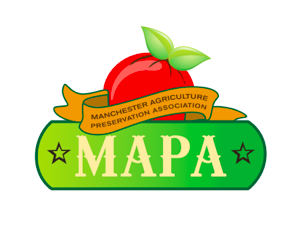Agriculture Is A $3.5 Billion Industry With 20,000 Jobs In Connecticut
The study measured direct sales and purchases by farms and other agriculture businesses, updating numbers that agriculture officials have been using for the past two decades.
"This was something that was needed by policy advocates and agricultural stakeholders," said Rigoberto Lopez, professor and department head of UConn's Department of Agriculture and Resource Economics, who led the study.
The study, based on 2007 sales data, shows that old estimates that were being used by the General Assembly of a $2 billion industry were too low, and estimates of 50,000 jobs associated with agriculture were much too high, Lopez said.
Total direct sales of agricultural products were $551.6 million, the study showed; processing totaled $955 million and forest product sales totaled $131 million. The nursery, greenhouse, sod and flower industries accounted for the largest portion of directagricultural product sales, a total of 49 percent, followed by dairy, 13 percent and tobacco, 10 percent.
Lopez said the group was very careful to count only agricultural production and processing — excluding the peripheral industries such as landscaping, grounds-keeping, bakeries and distilleries.
But the study also includes ripple effects, in the form of goods and services that farms and other agriculture firms purchase — such as feed, veterinary services, equipment, building services, electricians and many other trades. The sector's impact "cascades throughout the state's economy," the study said.
Officials Monday lauded the study's results as a strong reminder of agriculture's contribution to the state.
"People forget that agriculture is an economic generator in our state," said state agriculture Commissioner F. Philip Prelli. "Agriculture is the oldest business in the state of Connecticut as we celebrate our 375th birthday."
"We'll use this to remind people how important agriculture is," he said.
Prelli said the diversification of the state's farms has helped the industry stay healthy and grow in many sectors, and contributes to the impact.
The study used three separate types of economic modeling, which yielded three totals for the impact on the state ranging from $2.7 billion to $3.5 billion. That compares with a total value of goods and services produced in Connecticut of $212 billion. Crucial to producers in the state, the study also said the agriculture sector produced as much as $1.7 billion in value added to the economy — the difference between final payments and raw materials costs.
Of the 3.18 million acres of land in the state, about 405,000 — or 13 percent — are used for agriculture, the report said. Over 50 percent of the total land area in the state is forest (much of that former agriculture land from the 19th century) and 19 percent is developed.
"The study gives us the ability to educate decision-makers at the local level, the state level and the federal level that agriculture is alive and well and it's an important part of what makes Connecticut a special place," said Steven Reviczky, director of the Connecticut Farm Bureau.
Prelli said the results could be important for farmland preservation efforts and legislation affecting businesses, because "every single farm is a business."

No comments:
Post a Comment
Comments to this Blog and Posts are welcome